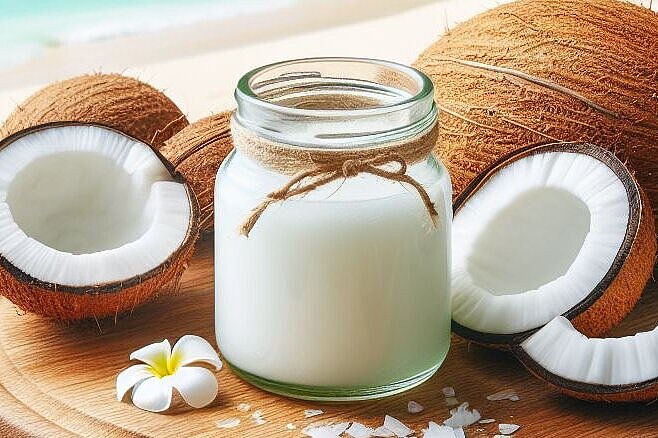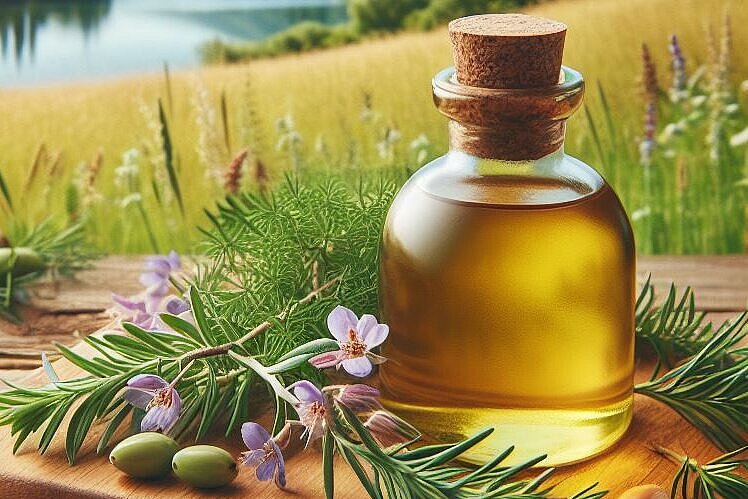Lanolin

Lanolin is a natural substance extracted from sheep's wool. It is a wool wax that protects and cares for the skin and coat of the animals. Lanolin is used in many cosmetics and care products, for example in creams, ointments, lipsticks and shampoos. But is lanolin also suitable for dogs? In this article, you can find out more about this ingredient and its advantages and disadvantages for your four-legged friend.
What is lanolin and how does it work?
Lanolin consists of various fatty acids, alcohols and waxes. It has a yellowish color and a viscous consistency. Lanolin has several properties that make it a popular ingredient in the cosmetics industry:
- It is an emulsifier, meaning it combines water and fat into an even mixture.
- It is a moisturizer, meaning it binds water to the skin and keeps it supple.
- It is an emollient, i.e. it smoothes the skin and makes it elastic.
- It is a protective film, i.e. it covers the skin like a barrier and protects it from external influences.
Lanolin can therefore care for and protect both the skin and the hair. This applies not only to humans, but also to dogs. Many dogs have dry or sensitive skin that is prone to itching, dandruff or inflammation. Lanolin can help here by moisturizing and soothing the skin. The coat can also benefit from lanolin, as it becomes shinier, softer and easier to comb.
What are the benefits of lanolin for dogs?
Lanolin has a number of benefits for dogs that you can take advantage of. Here are some of them:
- Lanolin is natural and biodegradable. It contains no artificial additives or preservatives that could harm your dog.
- Lanolin is hypoallergenic. This means that it very rarely leads to allergic reactions. However, you should always carry out a tolerance test before trying a new product on your dog.
- Lanolin is versatile. You can use it for both your dog's skin and coat care. There are various products with lanolin on the market, for example creams, ointments, sprays or shampoos. You can also buy pure lanolin and use it as needed.
- Lanolin is inexpensive. You only need a small amount of the lanolin to achieve an effect. It also lasts a long time and does not need to be refrigerated.
What are the disadvantages of lanolin for dogs?
While lanolin is a useful ingredient for dogs, it also has some disadvantages that you should be aware of. Here are some of them:
- Lanolin can be contaminated. Since it comes from the wool of sheep, it may contain residues of pesticides or other chemicals. These can harm your dog or trigger allergic reactions. You should therefore always pay attention to the quality and origin of the lanolin and only buy products from trustworthy suppliers.
- Lanolin can become rancid. If it is stored for too long or handled incorrectly, it can oxidize and become rancid. You can recognize this by an unpleasant smell or discoloration of the wool wax. You should no longer use rancid lanolin as it loses its effectiveness and can harm your dog.
- Lanolin can be sticky. As it is very greasy, it can leave a sticky film on your dog's skin or coat. This can be unpleasant and attract dirt or bacteria. You should therefore only ever apply a thin layer and wipe off any excess lanolin with a cloth.
Lanolin is a natural ingredient that has many benefits for both humans and dogs. It can care for and protect your dog's skin and coat. However, you should also be aware of some disadvantages and always pay attention to the quality and compatibility of the lanolin.
If you notice any signs of hypersensitivity or poisoning in your dog, you should see your vet immediately. We are not a substitute for a vet, but we try to be as accurate as possible. Every dog reacts differently and we recommend you get a second opinion or consult your vet if in doubt.
Stay healthy and take good care of your four-legged friend!😊
Similar to Lanolin
Beeswax is the secretion of four pairs of wax glands on the abdomen of bees. The bees chew the wax softly and use it to form the hexagonal cells of their honeycombs. In these cells they store honey...
Shea butter is obtained from the nuts of the shea tree, which grows mainly in the savannahs of West Africa. It is known for its rich fatty acids, vitamins (especially vitamin E) and minerals. This...
Coconut oil is a vegetable fat that consists of around 90% saturated fatty acids. Most of these are so-called medium-chain fatty acids (MCT), which are easier for the body to metabolize than other...
Jojoba oil is not actually an oil, but a liquid wax that solidifies at room temperature. It has a golden yellow color and a neutral odor. It has been used for centuries by the indigenous people of...



